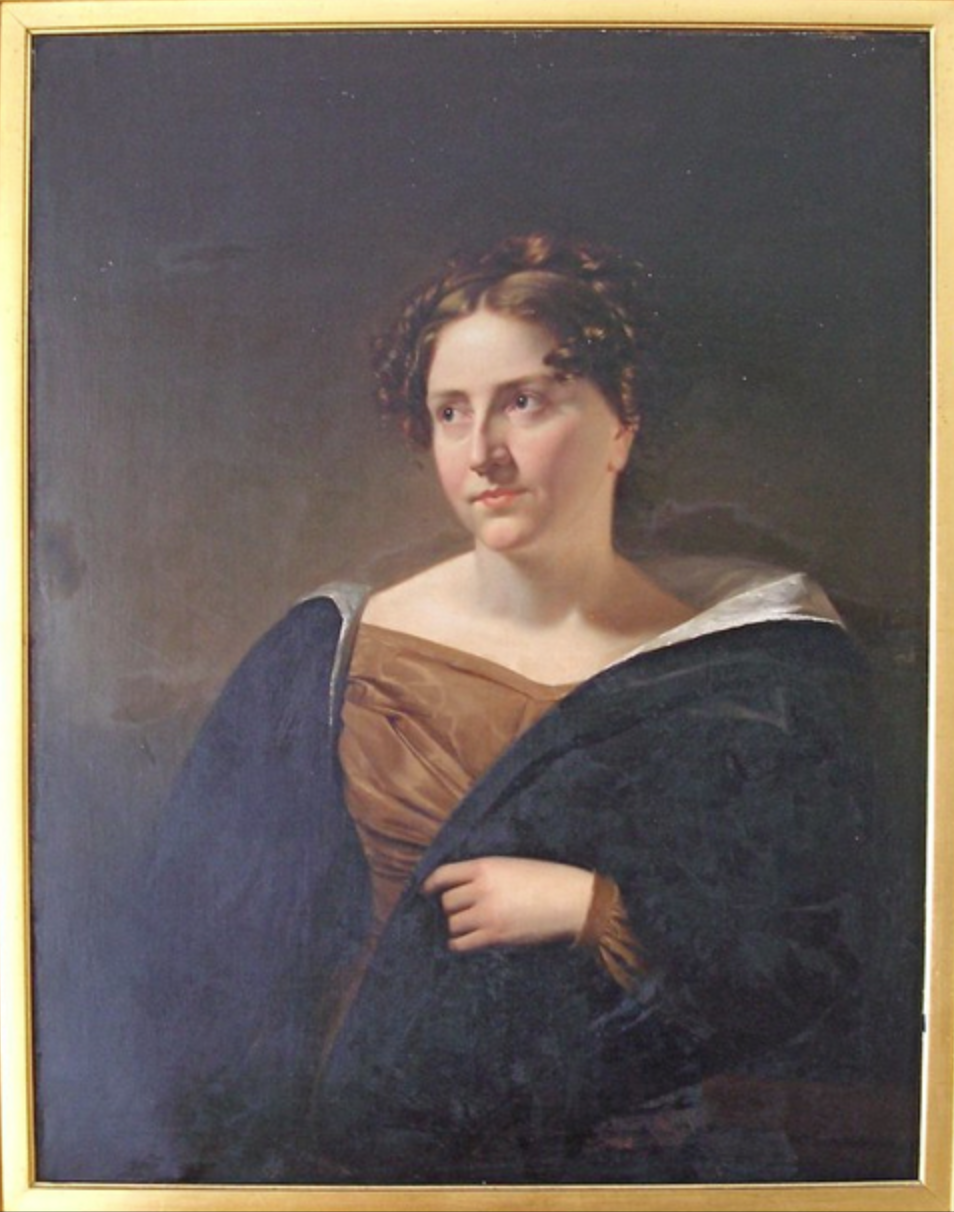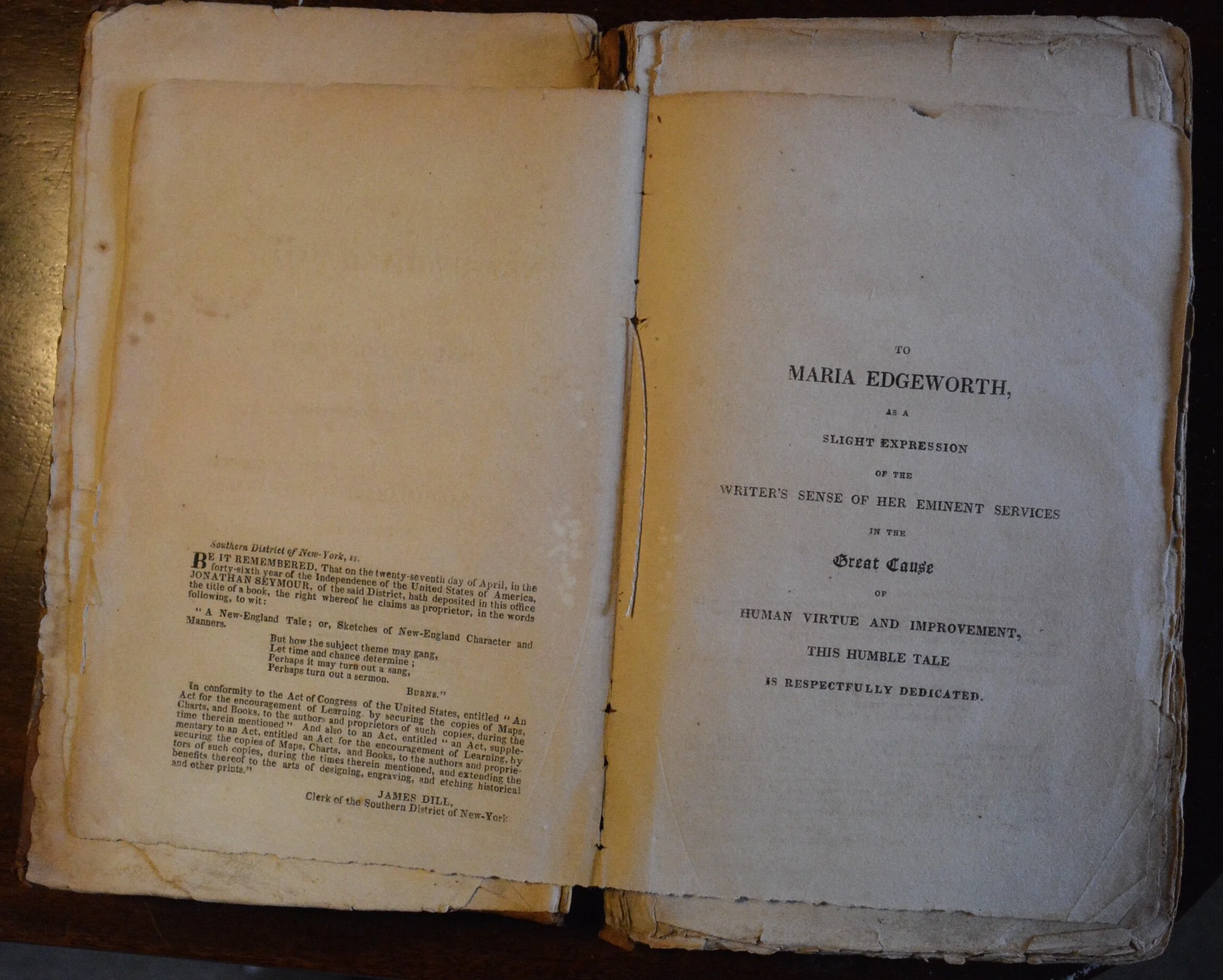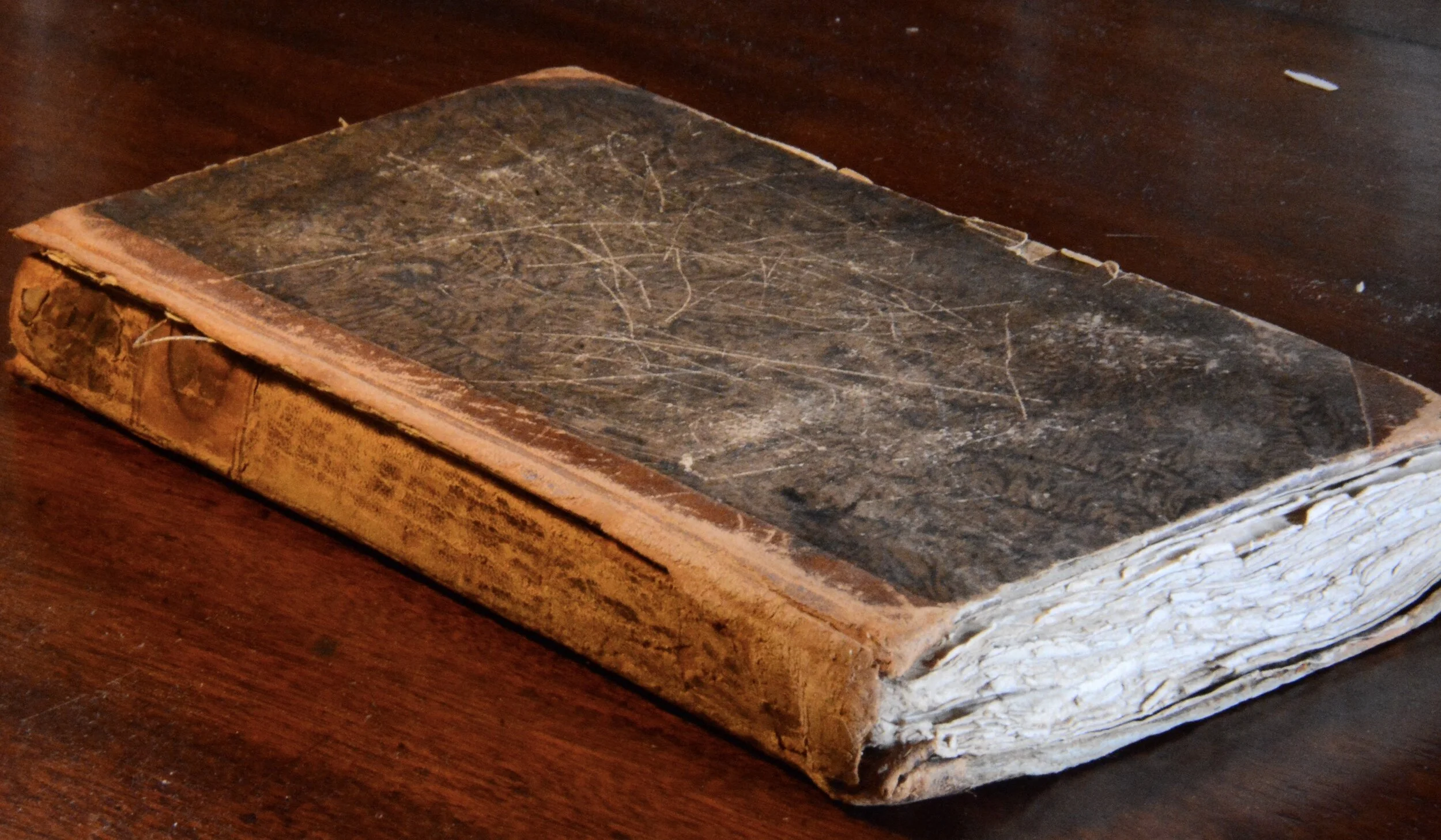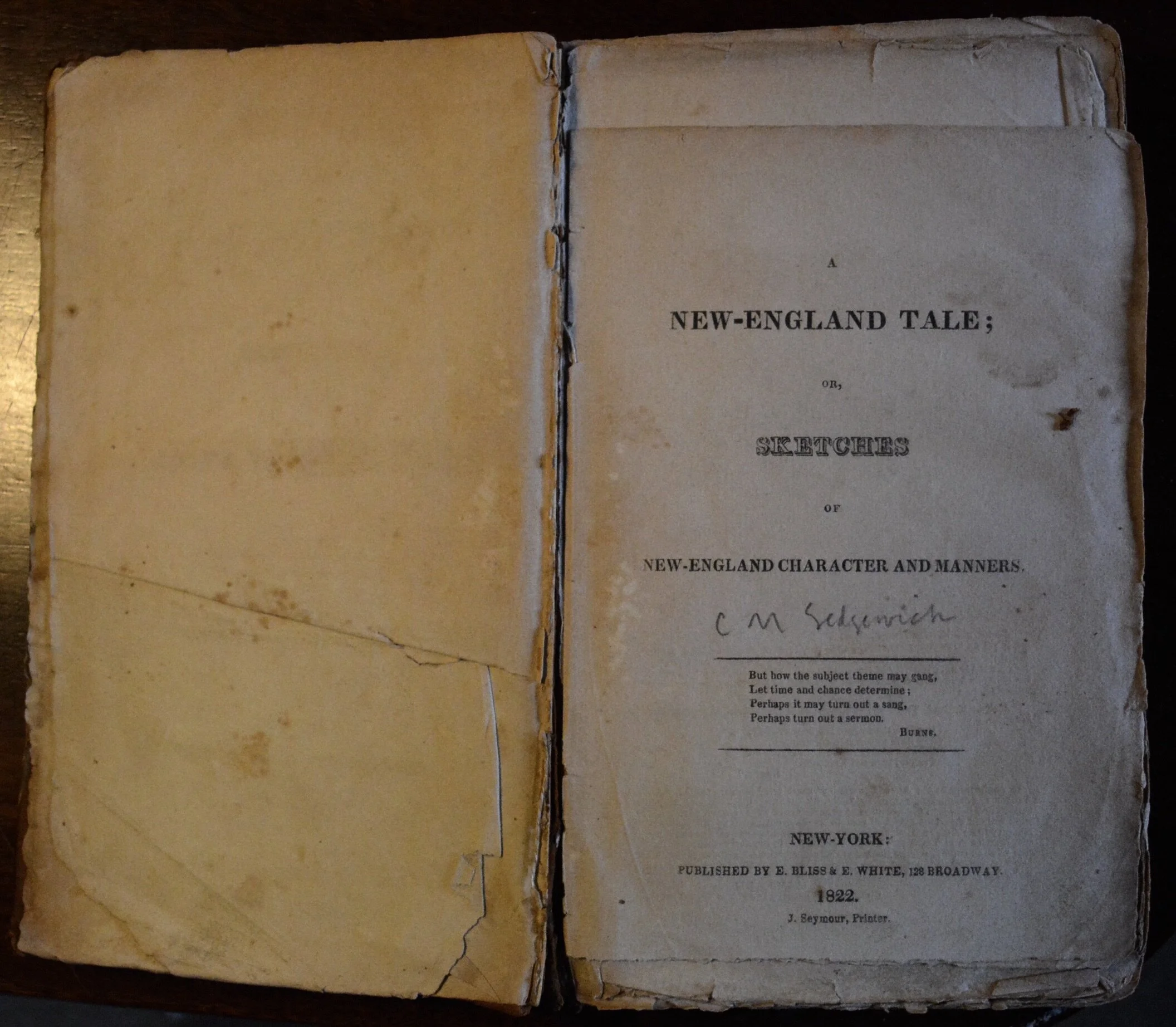One thing I have discovered about Catherine Maria Sedgwick is that she is perpetually being discovered.
A second thing I have discovered is that, in my circles anyway, this author now acknowledged to have portrayed women in a more sophisticated and nuanced way than was typical of her era, remains an unknown. I have asked people who I consider to be smart, literate, well read, and well educated if they can tell me anything about her (Hint: she’s not a Facebook friend of a friend). The results have been underwhelming.
A third thing I have discovered is that most people, including me, meet their discovery of Catherine Maria Sedgwick with a touch of self-rebuke. We certainly should have known.
A fourth thing I have discovered is the Catherine Maria Sedgwick Society, a group of scholars and academics who get together annually to keep the fires burning, “promoting the study and awareness of Sedgwick’s life and works.”
But before I discovered any of these things I discovered that I own a first edition her first published novel, A New England Tale (1822). (link)
Most sources book-end her career and notoriety within the nineteenth century with a rise to prominence and a fade to near obscurity by the end of the century.
“Catharine Maria Sedgwick was one of the leading figures in early-nineteenth-century American literary culture. Although she is less well known today, she set a pattern for the development of both domestic novels and historical novels in this country. Male writers such as James Fenimore Cooper and William Cullen Bryant respected Sedgwick as a peer, while female authors such as Lydia Maria Child and Harriet Beecher Stowe regarded her as a literary role model.” (Annenberg) Other sources note Sedgwick’s primacy in establishing a distinctly American canon, “Sedgwick was immediately recognized as one of the writers creating an indigenous American literature.” (women history blog)
Indigenous American literature was an important concept for the young country , as was an indigenous arts industry. S.G. Goodrich, editor of The Token and Atlantic Souvenir, an annual collection of literary works and “embellishments” noted in the preface to the 1836 edition that while for its nine years in existence, The Token had “been sustained by American writers” 1836 was the first year that the same could be said for its artworks. Owing to advances in the arts and production, the editors were proud to announce that the 1836 edition was the “first annual, and the only highly embellished book, issued from the American press, which could claim entire independence from foreign aid.”
A short story “New Year’s Day,” attributed to “Miss Sedgwick,” is the second piece in the 1836 Token.
But something else I have discovered about Sedgwick is that attribution of her authorship is often difficult to discern, and sometimes, apparently, willfully obscured. In fact, her second major novel, Redwood (1824), upon its translation for publication in France was attributed not to Sedgwick, but to James Fenimore Cooper. Why? Because of her known affinity with Cooper? Because, like Cooper’s work, Redwood featured sympathetic portrayals of Native American characters? Or perhaps because Cooper was an American author already well known to the French?
The photos of A New England Tale show Sedgwick’s name appeared nowhere in the title pages or elsewhere. Several sources suggest that her dedication of the work to Maria Edgeworth, the renowned Anglo-Irish writer, was a sly reference to the fact that this work too was written by a woman.
Just the pencil markings of a previous owner tell us the author’s name.
Anonymity, even for male authors, was common in the era—Cooper and Hawthorne—both published anonymously or pseudonymously. Recently Stephen King made use of the gambit with the Richard Bachmann series. Sedgwick, at certain times anyway, made it a bit of an obsession. So much so that she even wrote a short story on the dilemma, Cacoethes Scribendi, that appeared in Titles and Sketches. Iironically Titles and Sketches was the only one of Sedgwick’s books published in her lifetime that did carry her name on the title page. Sedgwick’s use of anonymity is nicely explored in Behind the Veil. Catherine Sedgwick and Anonymous Publication by Melissa J. Homestead. Homestead’s piece, though it focuses on Sedgwick, covers a lot of ground; it is sure to up a reader’s Jeopardy skills.
Whatever conclusion you draw, it may help explain why Sedgwick now requires “discovery.” As her Wikipedia entry sums up “By the end of the 19th century, she had been relegated to near obscurity. There was a rise of male critics who deprecated women's writing as they worked to create an American literature. Interest in Sedgwick's works and an appreciation of her contribution to American literature has been stimulated by the late 20th century's feminist movement. Beginning in the 1960s, feminist scholars began to re-evaluate women's contributions to literature and other arts and created new frames of reference for considering their work.”
It may also explain why all my smart friends know who Hawthorne and Cooper are, but not Sedgwick.





